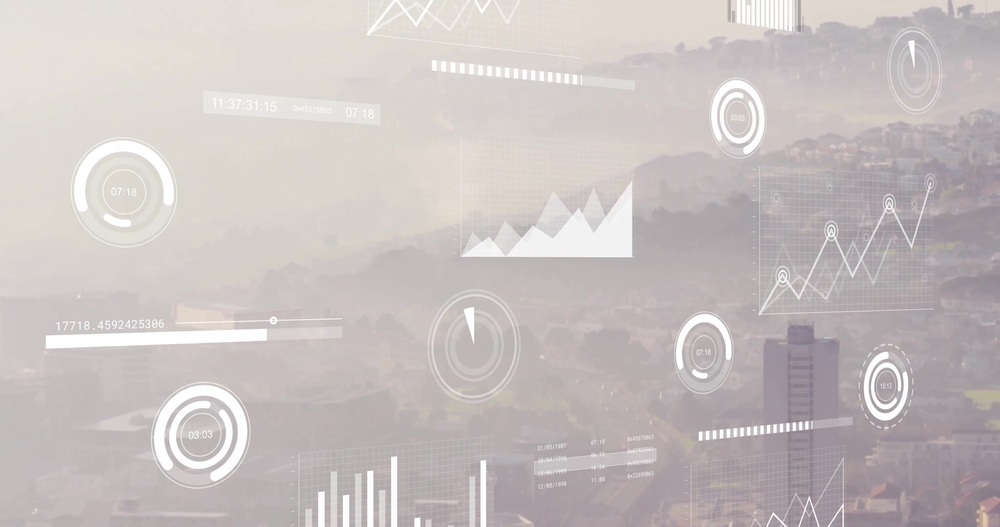
Dashboards for Smarter Cities: Strengthening Water Security Through Data-Driven Insights
In a world where urban populations are rapidly growing and climate pressures are intensifying, the security of water resources has emerged as a defining challenge. Cities, as hubs of human activity, depend on resilient water systems not only to sustain life but also to safeguard public health, ecosystems, and economic development. Against this backdrop, digital dashboards are becoming indispensable tools to enhance water security in smart cities, providing decision-makers with actionable insights to anticipate risks, allocate resources, and promote equitable solutions.
Recent research has shown the critical importance of developing robust city-level measures of health, social determinants, and water security. Many scholars argue that improving population health requires indicators that capture the complexity of urban living, from environmental quality to socio-economic conditions. This is why the idea of Urban Water Security Dashboard has been recently introduced, as a systems-based approach that integrates diverse data streams to assess a city’s ability to provide adequate, safe, and reliable water. Together, these studies underscore a common point: without structured and transparent information, cities cannot effectively manage the interconnected risks threatening their water systems.
Dashboards excel because they transform raw data into an intelligible narrative. A well-designed water security dashboard does more than visualize numbers; it highlights vulnerabilities, identifies patterns, and monitors progress over time. For example, integrating indicators of water availability, quality, infrastructure, governance, and ecosystem services creates a holistic picture that no single dataset could provide. Importantly, these platforms can also serve as early warning systems, enabling city officials to detect anomalies such as sudden drops in water quality or usage spikes that may signal leaks or contamination.
Beyond technical monitoring, dashboards also foster participatory governance. When made publicly accessible, they democratize information, empowering communities, researchers, and policymakers to engage in evidence-based dialogue. This is particularly important in the OneAquaHealth vision, where water security is not treated in isolation but in connection with human well-being, biodiversity, and the broader urban ecosystem. Open dashboards allow citizens to understand how water scarcity, pollution, or ecosystem degradation may affect their health, encouraging more sustainable behaviors and stronger social accountability.
The health dimension is especially critical. Unsafe or insufficient water directly drives health inequities, disproportionately affecting vulnerable groups. Dashboards that integrate socio-demographic data with water security indicators can reveal where interventions are most urgently needed, helping to prevent disease outbreaks and reduce disparities. Gourevitch et al. highlight that measuring inequities at the city level is essential to guide equitable policies. By aligning water-related data with public health outcomes, dashboards help ensure that solutions reach those who need them most.
Case studies further confirm the value of these tools. Urban dashboards tuned out as capable to capture how climatic shocks, population pressures, and governance failures interact to compromise water security. By characterizing cities along multiple dimensions, the dashboard allows comparisons across regions and the identification of best practices. Meanwhile, Gourevitch et al. stress that integrating diverse determinants of health into city-level measures can strengthen interventions aimed at improving well-being. The convergence of these approaches demonstrates the opportunity to merge environmental, social, and health data into next-generation dashboards capable of supporting complex urban challenges.
For initiatives like OneAquaHealth, dashboards are not merely technical instruments but strategic enablers of systemic transformation. They embody the FAIR principles (Findable, Accessible, Interoperable, Reusable), ensuring that data from water monitoring, public health, and ecosystem surveillance can be shared and cross-referenced. This interoperability allows cities to move beyond siloed approaches and adopt integrated strategies where protecting water also protects human and animal health, and vice versa.
Looking ahead, the potential of artificial intelligence (AI) further amplifies the role of dashboards. Machine learning models can analyze dashboard data to forecast water demand, predict contamination events, or optimize infrastructure maintenance. When combined with participatory platforms, these predictive capabilities ensure that cities are not just reactive but proactive, addressing threats before they escalate into crises.
In conclusion, dashboards for water security are more than digital displays: they are decision-making allies in the quest for resilient, healthy, and sustainable cities. By linking environmental, health, and social indicators, they help bridge the gap between data and action, empowering both policymakers and citizens. For Europe’s OneAquaHealth vision, such tools offer a pathway to strengthen the connection between urban ecosystems and public health, ensuring that water security is a foundation for equitable and sustainable futures.
Author(s): Oscar Tamburis, University of Naples Federico II